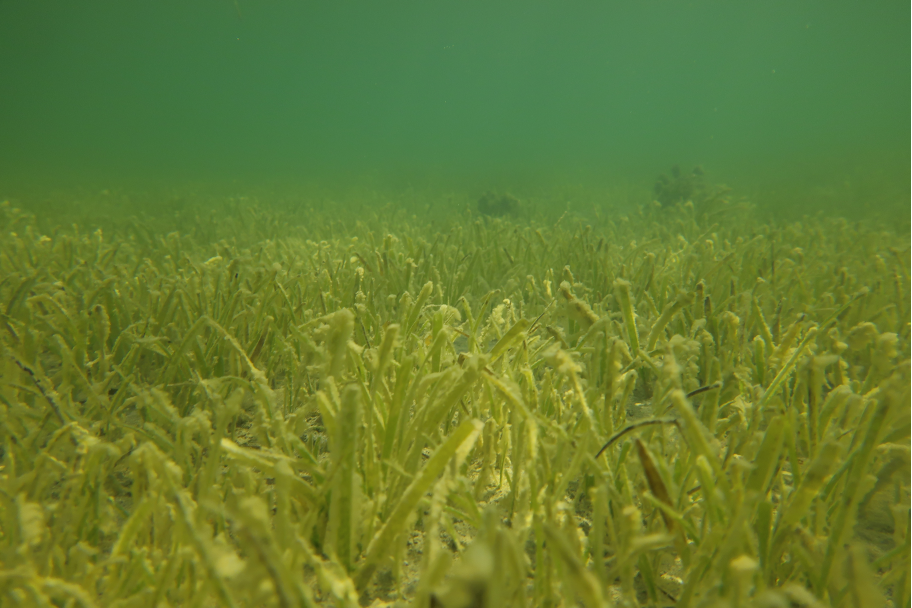KAUST researchers discover an innovative way to explore the Red Sea’s precious Blue Carbon ecosystems

A turtle showing off its survey gear.
In a new study published in the Proceedings of the Royal Society B, KAUST scientists, in collaboration with the Queensland Government (Australia), have discovered 34 previously unknown seagrass meadows in the Red Sea by tracking the foraging behavior of green turtles. The study demonstrates the benefits of observing turtles to survey marine ecosystems that are crucial for carbon capture and economic livelihoods while providing vital new information for sustainability policies in the Red Sea.
Seagrass, mangroves and salt marshes are marine ecosystems that actively sequester carbon, known as blue carbon. Studies have shown that blue carbon ecosystems store enormous amounts of carbon in their sediments and are even more effective at capturing carbon than rain forests. They also act as vital marine habitats, with their economic value estimated to be at least tens of billions of dollars. Damaging these sites results in the release of the sequestered carbon, which is why their protection is essential. Relevant policies have heavily depended on satellite observations to survey blue carbon habitat locations and size, which are useful for shallow coastal waters but not nearly as reliable for seagrass meadows that exist at depths not visible to satellites. However, models estimate that only 10% of seagrass meadows globally have been identified. This new study shows that for a more accurate assessment of seagrass, sophisticated space technology benefits when complemented by turtles that wear tags for remote sensing their movements.
Because the green turtle population is growing in the Red Sea and these animals forage for seagrass, the scientists tagged and tracked 53 turtles who were free to wander the sea. The turtles led to the discovery of 34 previously unknown seagrass meadows, increasing the known area of seagrass in the Red Sea by nearly 15%. More impressively, the turtles were about 20 times more reliable at identifying seagrass meadows than the Allen Coral Atlas, a popular public database for scientists that maps the world’s coasts. Much of the difference between the two observation systems was attributed to the turtles revealing seagrass meadows at depths beyond 5 m. Seagrasses can grow at depths of 70 m, and their capacity to capture blue carbon varies with its depth.

Seagrass in the Red Sea.
Using green turtle tracking to discover new blue carbon habitats is also far more cost-effective. KAUST Ibn Sina Distinguished Professor Carlos Duarte, who led the study, said that for comparable surveys, such as airplanes fitted with hyperspectral and LIDAR sensors, the only technology that can match that of green turtles in accuracy would cost several tens of millions of dollars, while tagging sea turtles would cost less than 1% of those costs.
“Countries need reliable, accurate data to make good policies for protection of the environment, which also protects their economies. Our study provides crucial data for the Red Sea, which will assist the many countries along it in formulating conservation strategies and blue carbon programs,” he said Duarte.

